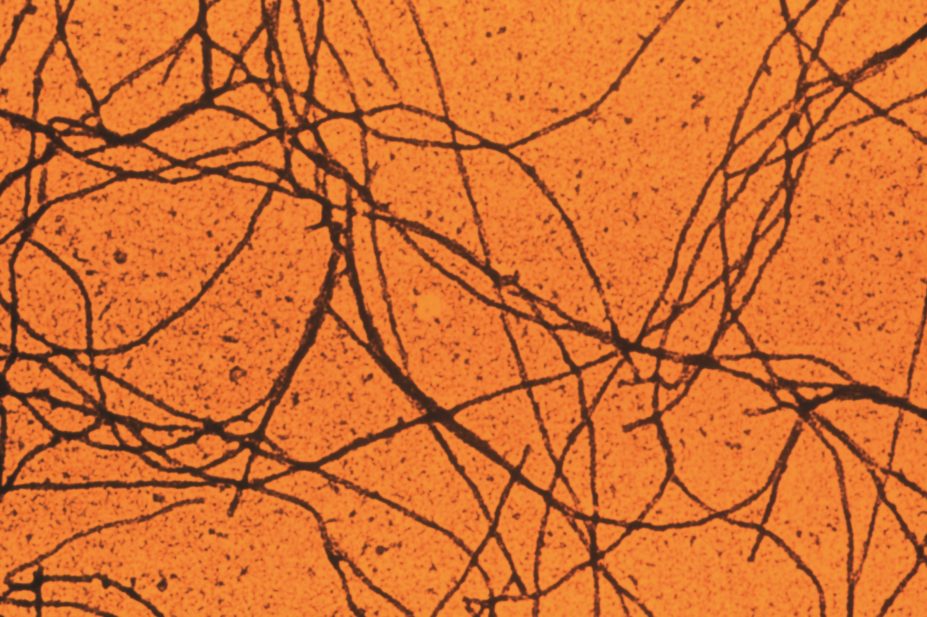
Dr Huntington Potter / Science Photo Library
An abnormal build-up of amyloid fibrils is implicated in many diseases, including Alzheimer’s, Parkinson’s and rheumatoid arthritis. In 2004, researchers at the University of Washington used computer modelling to predict that the development of amyloid proteins would pass through a toxic, intermediate state.
Ten years on, the same researchers have confirmed the existence of the toxic intermediary and have bioengineered a protein structure called an “α-sheet” that binds and neutralises the toxic species, preventing amyloid fibrils from forming[1]
.
Writing in eLife (online, 15 July 2014), lead author Valerie Daggett says the α-sheet represents a novel class of amyloid inhibitors that could potentially be useful for both diagnosis and treatment of amyloid diseases.


